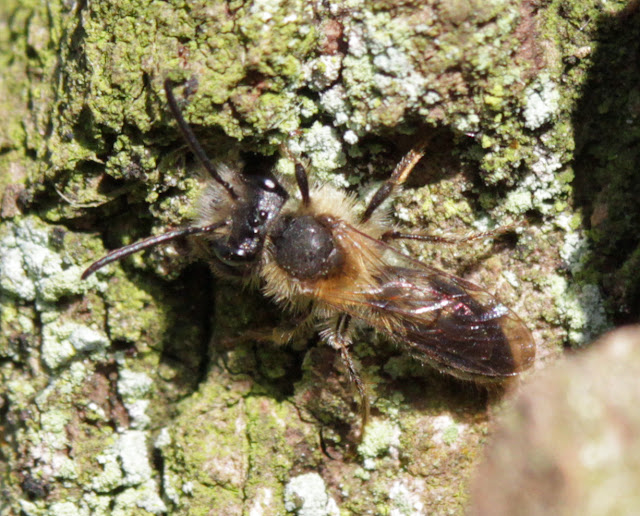A short walk down to the damp meadow by the River Bourne demonstrated once again the great diversity of flowers there, with plenty of Hawkweed, Bristly Oxtongue, Fleabane, Ragwort, Mayweed, Birds-Foot Trefoil, Meadowsweet, Mint, Knotgrass and a small yellow trefoil of some sort, all in full flower. Last year there were plenty of Common Blue butterflies, but I didn't see any today. There was however a minute skipper, possibly an Essex Skipper, although I could not get around to looking at the underside of its antennae tips.
The other Lepidopteran seen - apart from the usual grass plumes - was a Shaded Broad Bar, Scotopteryx chenopodiata (confirmed almost instantly on ispot).
There was also this odd fly, plunging its proboscis deep into the flower throats of this mint head
Not much variety in the hoverflies, but particularly good for Sphaerophoria scripta,
together with some Episyrphus balteatus
and a couple of Eristalis tenax.
and there was one of the very common (this year at least) Myathropa florea.
On the way down by the side of the footpath beside the large OSR field, I found a nice Syritta pipiens, so recognisable by its size, shape and jizz. you can see the rear tibiae colour pattern slightly more clearly in the second photo.
The other Lepidopteran seen - apart from the usual grass plumes - was a Shaded Broad Bar, Scotopteryx chenopodiata (confirmed almost instantly on ispot).
There was also this odd fly, plunging its proboscis deep into the flower throats of this mint head
Not much variety in the hoverflies, but particularly good for Sphaerophoria scripta,
together with some Episyrphus balteatus
and a couple of Eristalis tenax.
and there was one of the very common (this year at least) Myathropa florea.
On the way down by the side of the footpath beside the large OSR field, I found a nice Syritta pipiens, so recognisable by its size, shape and jizz. you can see the rear tibiae colour pattern slightly more clearly in the second photo.













































